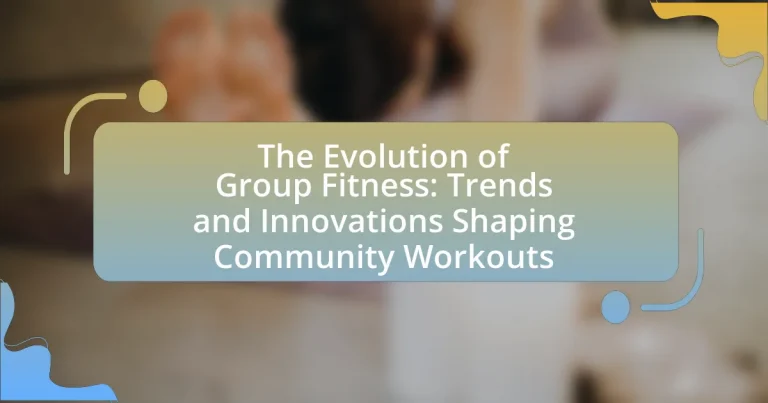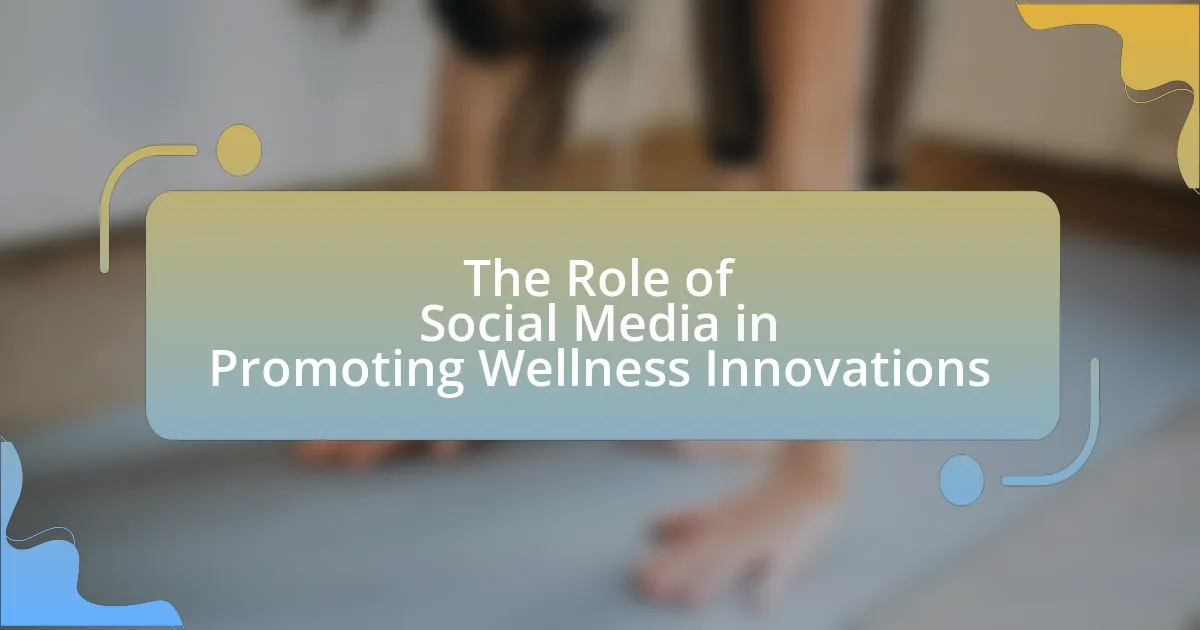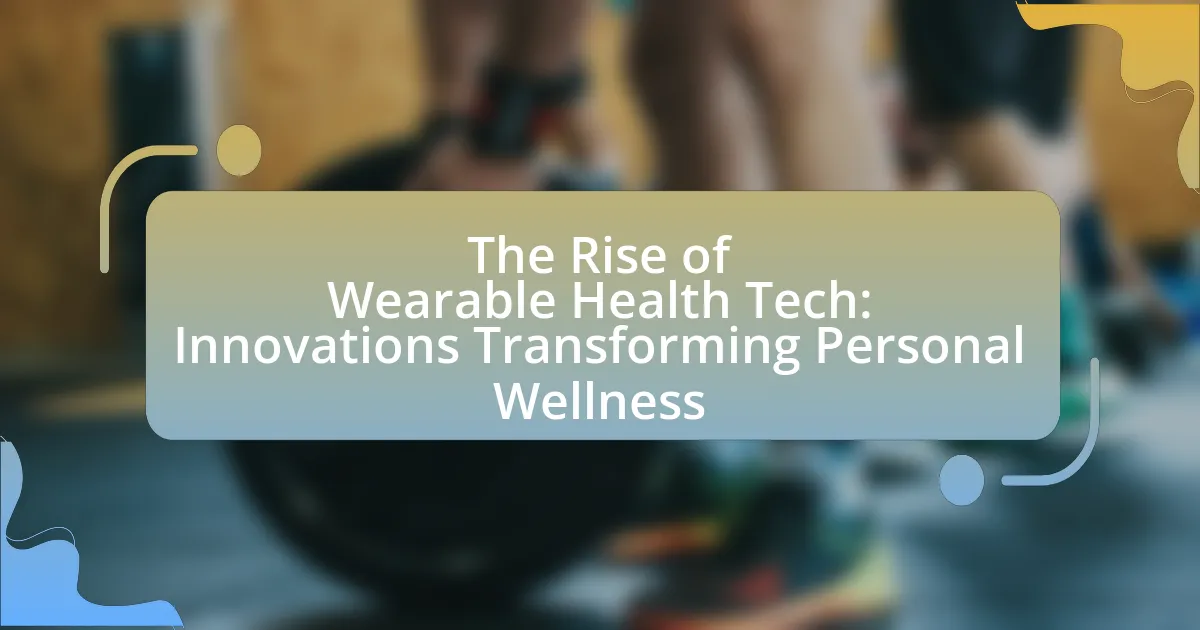The article examines the evolution of group fitness, tracing its development from informal aerobics gatherings in the 1960s to the diverse, technology-integrated classes available today. Key milestones include the rise of specialized classes in the 1980s and 1990s, the introduction of high-intensity interval training (HIIT) in the 2000s, and the impact of technology on accessibility and community engagement. The discussion highlights how cultural shifts and societal needs have influenced group fitness trends, emphasizing inclusivity, community building, and the psychological benefits of participating in group workouts. Additionally, the article explores current innovations and future trends shaping group fitness, including virtual and hybrid classes, and offers practical tips for participants and instructors to enhance their experiences.
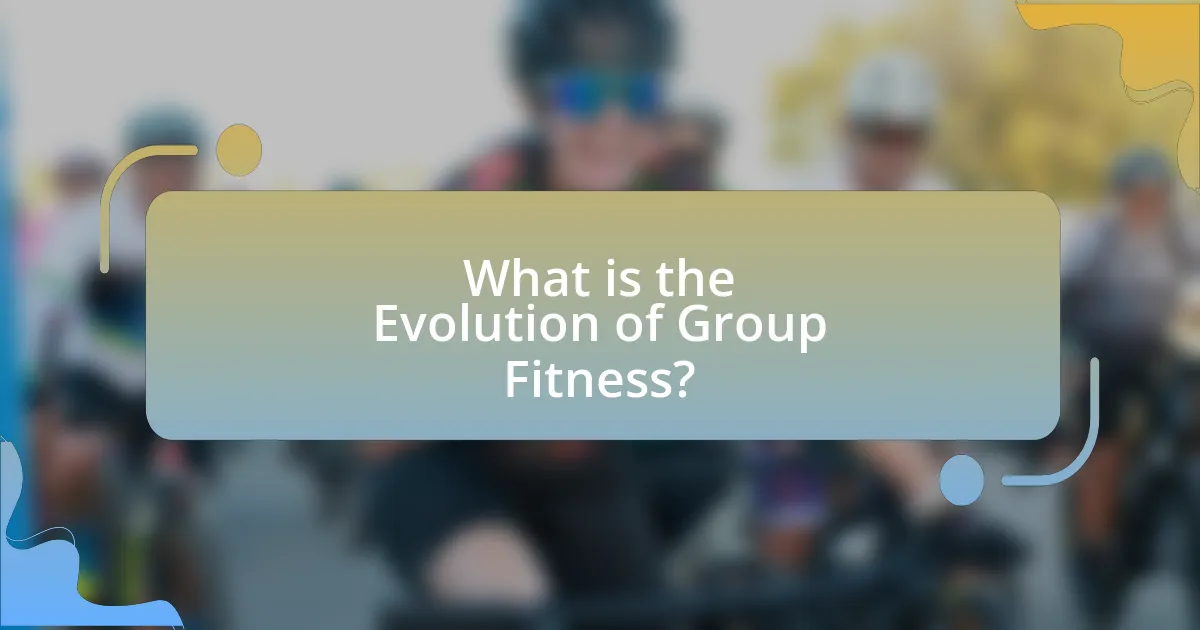
What is the Evolution of Group Fitness?
The evolution of group fitness has transitioned from informal gatherings to structured classes led by certified instructors. Initially, group fitness emerged in the 1960s and 1970s with the popularity of aerobics, pioneered by figures like Jane Fonda, who introduced workout videos that encouraged collective participation. This trend expanded in the 1980s and 1990s with the rise of fitness clubs offering diverse classes such as step aerobics, spinning, and dance-based workouts, catering to various demographics and fitness levels.
By the 2000s, the introduction of high-intensity interval training (HIIT) and functional training further transformed group fitness, emphasizing efficiency and effectiveness in workouts. The integration of technology, such as fitness apps and virtual classes, has also played a significant role in recent years, allowing for greater accessibility and community engagement. According to the International Health, Racquet & Sportsclub Association (IHRSA), group fitness classes have consistently ranked among the top trends in the fitness industry, highlighting their enduring popularity and adaptability to changing consumer preferences.
How has group fitness changed over the decades?
Group fitness has evolved significantly over the decades, transitioning from traditional aerobics classes in the 1980s to diverse offerings like high-intensity interval training (HIIT), yoga, and dance-based workouts today. In the 1980s, group fitness primarily focused on choreographed aerobic routines led by instructors, often in large gym settings. By the 1990s, the introduction of specialized classes, such as spinning and Pilates, began to diversify the options available to participants.
The 2000s saw the rise of functional training and boot camp-style classes, emphasizing strength and conditioning in a group setting. More recently, the integration of technology, such as virtual classes and fitness apps, has further transformed group fitness, allowing for remote participation and personalized experiences. According to a 2021 report by the International Health, Racquet & Sportsclub Association (IHRSA), group fitness classes have become a key driver of gym membership retention, highlighting their growing importance in the fitness industry.
What were the key milestones in the history of group fitness?
The key milestones in the history of group fitness include the introduction of aerobics in the 1960s, which popularized structured group workouts, and the launch of the first group fitness classes in the 1980s, such as step aerobics. In the 1990s, the rise of specialized classes like spinning and yoga further diversified group fitness offerings. The 2000s saw the emergence of high-intensity interval training (HIIT) classes, which gained popularity for their efficiency and effectiveness. Additionally, the integration of technology in the 2010s, including virtual classes and fitness apps, transformed how group fitness is accessed and experienced. These milestones reflect the evolution of group fitness from simple aerobic classes to a diverse range of options catering to various fitness levels and preferences.
How did cultural shifts influence group fitness trends?
Cultural shifts significantly influenced group fitness trends by altering societal attitudes towards health, community, and exercise. For instance, the rise of the wellness movement in the late 20th century emphasized holistic health, leading to increased participation in group fitness classes that promote not just physical fitness but also mental well-being. Additionally, the growing popularity of social media in the 21st century has fostered a culture of sharing fitness journeys, which has encouraged group workouts as a means of community engagement and accountability. This shift is evidenced by the proliferation of fitness challenges and group classes that leverage social platforms for promotion and participation, reflecting a collective desire for connection and support in fitness endeavors.
What are the defining characteristics of modern group fitness?
Modern group fitness is characterized by inclusivity, variety, and community engagement. These characteristics reflect a shift towards accommodating diverse fitness levels and preferences, allowing participants to feel welcome regardless of their background. The incorporation of various workout styles, such as HIIT, yoga, and dance, caters to different interests and keeps sessions dynamic. Additionally, the emphasis on community fosters social connections among participants, enhancing motivation and accountability. Research indicates that group fitness classes can improve adherence to exercise routines, as social support plays a crucial role in maintaining long-term fitness habits.
How do current group fitness classes differ from traditional formats?
Current group fitness classes differ from traditional formats primarily through their emphasis on variety, technology integration, and community engagement. Unlike traditional classes that often follow a fixed routine, modern classes incorporate diverse workout styles such as HIIT, dance, and yoga, catering to a wider range of fitness levels and preferences. Additionally, technology plays a significant role, with many classes utilizing apps and wearables for tracking progress and enhancing participant experience. Furthermore, current classes foster a sense of community through social media interaction and group challenges, which contrasts with the more solitary nature of traditional formats. This evolution reflects a shift towards inclusivity and personalization in fitness, aligning with contemporary health trends.
What role does technology play in contemporary group fitness?
Technology plays a crucial role in contemporary group fitness by enhancing engagement, accessibility, and personalization of workouts. Fitness apps and wearable devices allow participants to track their performance metrics, such as heart rate and calories burned, fostering a competitive yet supportive environment. Virtual classes and streaming platforms have expanded access to group fitness, enabling individuals to join sessions from anywhere, thus breaking geographical barriers. Additionally, social media facilitates community building by allowing members to share achievements and motivate each other. According to a report by the International Health, Racquet & Sportsclub Association (IHRSA), 70% of fitness enthusiasts use technology to enhance their workout experience, underscoring its significant impact on modern group fitness dynamics.

What trends are shaping the future of group fitness?
The future of group fitness is being shaped by trends such as technology integration, personalized experiences, and a focus on community engagement. Technology integration includes the use of fitness apps and virtual classes, which have surged in popularity, especially post-pandemic, with a 50% increase in online fitness participation reported by the International Health, Racquet & Sportsclub Association. Personalized experiences are becoming essential, as data-driven insights allow fitness instructors to tailor workouts to individual needs, enhancing member satisfaction and retention. Additionally, community engagement is emphasized through social fitness events and challenges, fostering a sense of belonging among participants, which studies show can significantly improve adherence to fitness programs.
How are community workouts evolving in response to societal needs?
Community workouts are evolving to become more inclusive and accessible, addressing diverse societal needs such as mental health, social connection, and physical well-being. This evolution is evident in the rise of virtual fitness classes, which allow participation regardless of location, and the incorporation of wellness programs that focus on mental health alongside physical fitness. For instance, studies show that group exercise can significantly reduce symptoms of anxiety and depression, highlighting the importance of social interaction in fitness settings. Additionally, community workouts are increasingly tailored to accommodate various age groups and fitness levels, ensuring that everyone can participate and benefit from these initiatives.
What impact has the pandemic had on group fitness participation?
The pandemic has significantly decreased group fitness participation due to health concerns and restrictions on gatherings. According to a survey conducted by the International Health, Racquet & Sportsclub Association (IHRSA) in 2020, 82% of fitness facilities reported a decline in attendance, with many members opting for home workouts or virtual classes instead. This shift has led to a rise in online fitness platforms, as gyms adapted to provide remote options, indicating a transformation in how group fitness is delivered and experienced.
How are inclusivity and diversity being addressed in group fitness?
Inclusivity and diversity in group fitness are being addressed through the implementation of programs that cater to various demographics, including different age groups, fitness levels, and cultural backgrounds. Fitness organizations are increasingly offering classes that are specifically designed for individuals with disabilities, seniors, and those from diverse cultural backgrounds, ensuring that everyone feels welcome and represented. For example, research from the International Journal of Environmental Research and Public Health highlights that inclusive fitness programs can lead to increased participation rates among underrepresented groups, demonstrating the effectiveness of tailored approaches in fostering a diverse fitness community.
What innovations are emerging in group fitness formats?
Innovations emerging in group fitness formats include the integration of technology, such as virtual and augmented reality experiences, which enhance engagement and accessibility. These technologies allow participants to join classes remotely, expanding the reach of fitness programs. Additionally, hybrid models combining in-person and online sessions are gaining popularity, catering to diverse preferences and schedules. Research indicates that 70% of fitness enthusiasts prefer a mix of both formats, highlighting the demand for flexibility in group workouts. Furthermore, specialized classes focusing on mental wellness, such as yoga and mindfulness sessions, are increasingly being incorporated into traditional fitness offerings, reflecting a holistic approach to health.
How are virtual and hybrid classes changing the landscape of group fitness?
Virtual and hybrid classes are transforming the landscape of group fitness by increasing accessibility and flexibility for participants. These formats allow individuals to join workouts from anywhere, breaking geographical barriers and enabling a broader audience to engage in fitness activities. According to a 2021 survey by the International Health, Racquet & Sportsclub Association, 70% of fitness consumers expressed interest in continuing virtual classes post-pandemic, highlighting a significant shift in preferences. This evolution not only caters to diverse schedules but also fosters a sense of community through online platforms, where participants can interact and motivate each other regardless of location.
What new fitness trends are gaining popularity among communities?
New fitness trends gaining popularity among communities include outdoor group workouts, virtual fitness classes, and wellness-focused activities like yoga and meditation. Outdoor group workouts have surged due to their ability to combine exercise with fresh air and social interaction, appealing to those seeking a community experience while staying active. Virtual fitness classes have become mainstream, especially post-pandemic, allowing participants to join from home, thus expanding access and convenience. Additionally, wellness-focused activities are increasingly prioritized, with studies showing that practices like yoga and meditation contribute to both physical health and mental well-being, making them attractive options for community fitness initiatives.
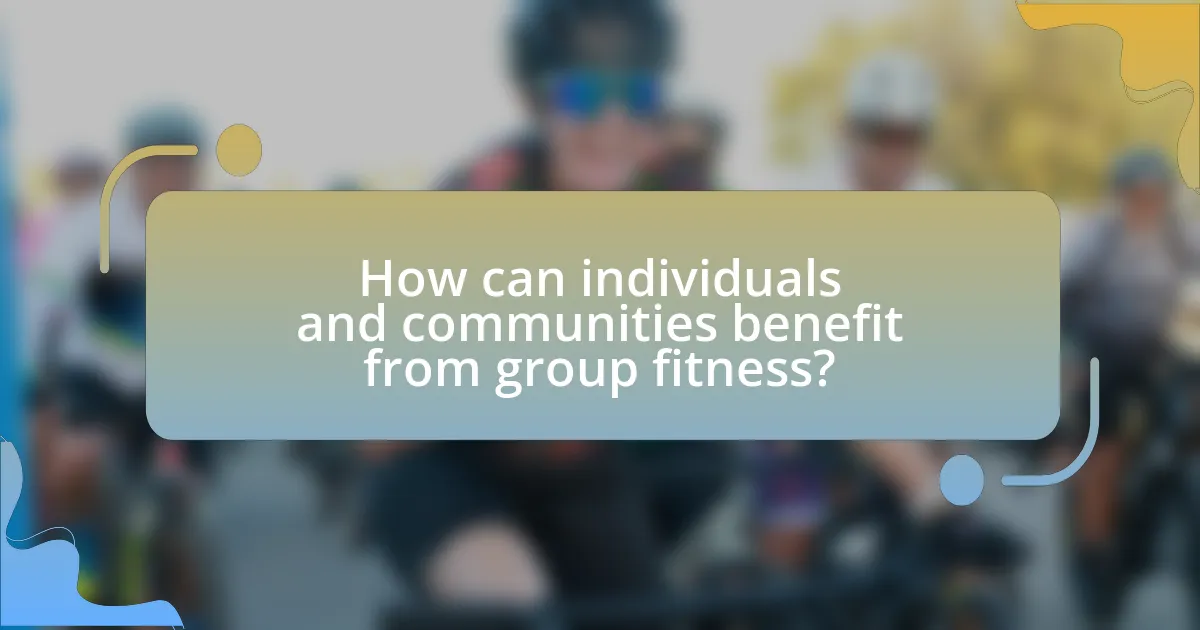
How can individuals and communities benefit from group fitness?
Individuals and communities benefit from group fitness by enhancing physical health, fostering social connections, and promoting mental well-being. Group fitness activities encourage regular exercise, which can lead to improved cardiovascular health, weight management, and increased strength, as supported by studies showing that group workouts can boost motivation and adherence to fitness routines. Additionally, participating in group fitness fosters a sense of community, reducing feelings of isolation and enhancing social support networks, which are crucial for mental health. Research indicates that social interactions during group workouts can lead to increased enjoyment and commitment to fitness goals, further reinforcing the positive impact on both individual and community health.
What are the social benefits of participating in group fitness?
Participating in group fitness offers significant social benefits, including enhanced social interaction and community building. Engaging in group workouts fosters connections among participants, leading to friendships and a sense of belonging. Research indicates that individuals who exercise in groups report higher levels of motivation and accountability, which can be attributed to the supportive environment created by shared goals and experiences. Additionally, a study published in the Journal of Sport and Exercise Psychology found that group fitness participants experience increased social support, which positively impacts their overall well-being and adherence to fitness routines.
How does group fitness foster a sense of community?
Group fitness fosters a sense of community by creating a shared environment where individuals engage in collective physical activity, promoting social interaction and support. This communal aspect encourages participants to build relationships, as they often work towards common fitness goals, attend classes regularly, and motivate each other. Research indicates that group exercise can enhance feelings of belonging and connection, as evidenced by a study published in the Journal of Sport and Exercise Psychology, which found that individuals participating in group fitness reported higher levels of social support and cohesion compared to solo workouts.
What psychological benefits are associated with group workouts?
Group workouts provide significant psychological benefits, including enhanced motivation, improved mood, and increased social support. The presence of others during exercise fosters accountability, encouraging individuals to push themselves harder and remain consistent in their fitness routines. Research indicates that group exercise can lead to the release of endorphins, which are chemicals in the brain that promote feelings of happiness and reduce stress. Additionally, social interactions within group settings can combat feelings of loneliness and isolation, contributing to overall mental well-being. Studies have shown that participants in group workouts report higher levels of enjoyment and satisfaction compared to solo workouts, reinforcing the positive psychological impact of exercising in a community.
What practical tips can enhance group fitness experiences?
To enhance group fitness experiences, incorporating variety in workouts is essential, as it keeps participants engaged and motivated. Research indicates that diverse routines can improve retention rates in fitness programs; for instance, a study published in the Journal of Sports Sciences found that participants who experienced varied workouts reported higher satisfaction levels and were more likely to continue attending classes. Additionally, fostering a supportive community atmosphere encourages social interaction, which has been shown to increase adherence to fitness programs. A study by the American Journal of Preventive Medicine highlighted that social support in group settings significantly boosts individual commitment to fitness goals. Lastly, utilizing technology, such as fitness apps for tracking progress and scheduling, can streamline communication and enhance the overall experience, as evidenced by a survey from the International Health, Racquet & Sportsclub Association, which found that 70% of gym-goers preferred facilities that offered tech integration for class management.
How can participants choose the right group fitness class for their goals?
Participants can choose the right group fitness class for their goals by first identifying their specific fitness objectives, such as weight loss, muscle gain, or improved endurance. Once goals are defined, individuals should research classes that align with these objectives; for example, high-intensity interval training (HIIT) is effective for weight loss, while strength training classes are better suited for muscle gain. Additionally, participants can consult with fitness professionals or instructors who can provide insights on class formats and expected outcomes. According to a study published in the Journal of Sports Sciences, individuals who select classes based on their personal fitness goals are more likely to adhere to their exercise routines and achieve desired results.
What strategies can instructors use to create engaging group workouts?
Instructors can create engaging group workouts by incorporating varied formats, fostering a sense of community, and utilizing technology. Varied formats, such as circuit training, interval workouts, and themed classes, keep participants interested and motivated. Fostering a sense of community through team challenges and social interactions enhances group cohesion and encourages participation. Additionally, utilizing technology, such as fitness apps and virtual platforms, allows for real-time feedback and tracking, which can increase accountability and engagement. Research indicates that group cohesion significantly impacts exercise adherence, highlighting the importance of these strategies in maintaining participant interest and commitment.
